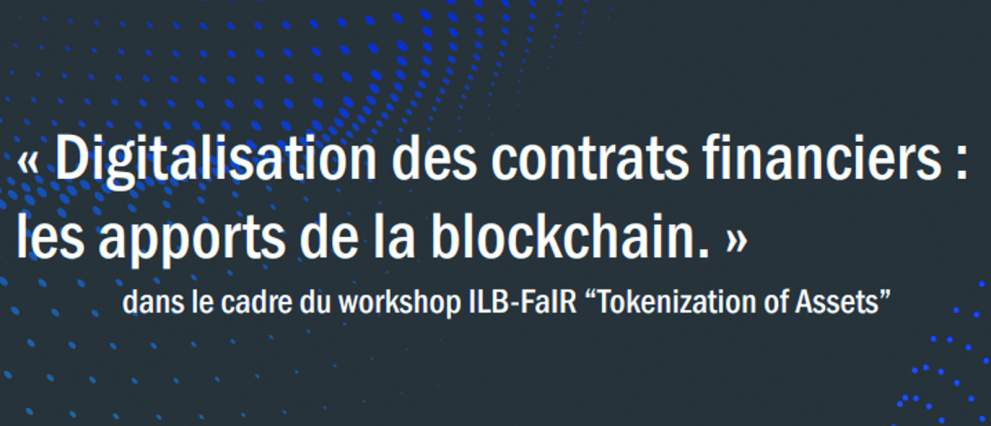READ THE ROUND TABLE
Our roundtable will discuss how financial market participants (brokers, marketplaces, investment banks and new entrants) are approaching the digitisation of assets with the help of a marketplaces, investment banks and new entrants) are approaching the digitisation of assets with the help of Blockchain technology. In the run-up to this workshop, we had two presentations: the first one outlined the the first one outlined recent initiatives around the issuance of “tokens”, and the second one was an opportunity to see how.
The second was an opportunity to see in detail the structure of a particularly mature player, LiquidShare. We from a list of very eloquent proposals and concepts to a practical implementation, going implementation, going into the detail of the technical specifications. It seems important to emphasise that there are very credible. It seems important to underline that very credible initiatives are at work, particularly in France. We have therefore largely moved beyond. We are therefore well beyond thought experiments on the theme of “can blockchain fit into the value chain of market operations? It is time to think about the time after, and it is in this spirit that the Institut Louis Bachelier that the Louis Bachelier Institute is organising this round table, via its “Finance and Insurance Reloaded” programme, which I have the opportunity to represent today.
Let me quickly summarise the main points I retained from the two previous presentations presentations:
– The tokenisation of assets is modern in more ways than one: firstly in an economy of First of all, in an economy of use rather than possession, proposing to its users to invest in tokens that they will spend to consume its services is very natural, and we have seen some examples of this, such as REF ? Then we have seen that if the exploitation of a distributed registry can facilitate a large number of operations currently performed by financial intermediaries (and thus reduce their cost and operational risk), it will only be the cost and operational risk), it will only be at its maximum if it includes the delivery versus payment stage, and and therefore if a stable corner is available.
– In addition, the end-to-end implementation of the blockchain-based trading process is underway at a rapid pace.
blockchain-based trading process is underway on an industrial scale. By “trading process” I mean the complete resolution of a I mean the complete resolution of a transaction, from the decision of both parties (the buyer and the seller), to its the buyer has the stock and the seller has the cash, without ambiguity. I understood from these presentations that presentations that while there were several competing technologies to be assembled, the two
of a successful and sustainable implementation are, on the one hand, the complete embedding of information into the blockchain (and not just an identifier that would require reference to an external database to have the entire contract being resolved), and on the other hand, the fact that and secondly, the relentless testing of new technological proposals, sometimes in partnership with with research laboratories, in order to develop the solution when technical obstacles are removed.
The main obstacles that I have in mind are: the difficulty of scaling up to meet the demands of current.
The main obstacles I have in mind are: the difficulty of scaling up to meet the demands of current exchanges on liquid securities and the preservation of the confidentiality of current contracts.
In order to continue our reflections, I was joined around the table, which is not round: Thibaud de Maintenant, who is CEO of LiquidShare, David Durouchoux of Forge Digital Markets and Société Générale Investment Bank and Sébastien Générale Investment Bank and Sébastien Choukroun from PwC.
